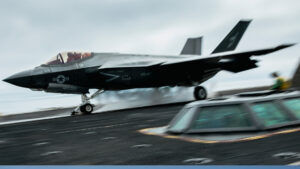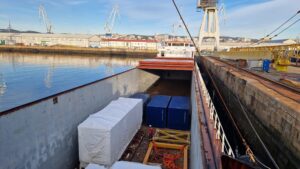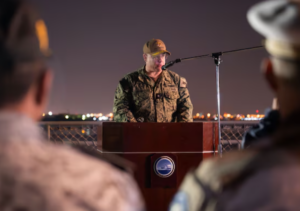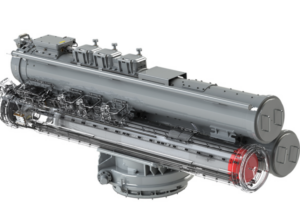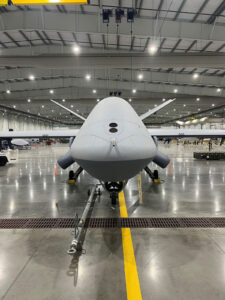F-35Bs complete weapons load tests aboard USS America

The F-35B Lightning II stealth fighter jets that are currently carrying out the third developmental test phase (DT-III) aboard amphibious assault ship USS America (LHA 6) reached a new milestone as the program completed weapons load testing on November 16.
A group of the next-generation aircraft from Patuxent River Integrated Test Force tested flying qualities at various aircraft weights, in particular in regard to crosswinds, sink rates, and high sea states. Additionally, the DT-III weapons team evaluated ordnance separation tests and live-fire tests.
USS America’s weapons department assembled two types of smart bombs for the testing. The team assembled 72 laser-guided Guide Bomb Units (GBU) 12 and 40 satellite-guided GBU-32s for the first time in the ship’s short history.
Laser-guided bomb (LGB) kits consist of a computer control group and air foil group normally attached to a general-purpose bomb to form an LGB. The dual mode, laser-guided kit enhances existing LGB kits by adding GPS/inertial navigation system capabilities.
Six GBU-12s were dropped on a live-weapons range in Yuma, Arizona during a two-day live-weapons drill.
“We’re here to augment the existing weight center of gravity effects of the aircraft to expand the fleet envelope wind over deck, and different lateral symmetry and asymmetry configurations,” said Gabriella Spehn, a F-35 weapons engineer from the Patuxent River Integrated Test Force (ITF).
The DT-III weapons team conducted the load tests on land prior to embarking on America. The team tested all of the takeoff and landing worst-case scenarios and endpoints.
“The only way to increase the endpoints is to test on board a ship for sink rates and high sea states, which is the next phase of testing after land-based testing is complete,” Spehn said. “There is no way to recreate the conditions that come with being out to sea.”
Although the tests are conducted to assess the limits of the aircraft, Spehn explained all tests are evaluated and conducted safely.
“We don’t just keep testing until something goes catastrophically wrong,” she said. “Each engineering discipline has to look back at the data we’ve collected after the most recent flight and completion of each test point, and then figure out if we feel comfortable proceeding to the next point.”
The F-35B DT-III pilots purposely conducted test flights under various unfavorable environmental conditions to test the aircraft’s limitations and capabilities.
“As we all know, we can’t choose the battle and the location of the battle, so sometimes we have to go into rough seas with heavy swells, heave, roll, pitch, and crosswinds,” said Royal air force (RAF) Squadron Leader Andy Edgell, an F-35 test pilot embedded at the Pax River ITF.
“The last couple of days we went and purposely found those nasty conditions and put the jets through those places, and the jet handled fantastically well. So now the external weapons testing should be able to give the fleet a clearance to carry weapons with the rough seas and rough conditions. We know the jet can handle it. A fleet clearance will come — then they can go forth and conduct battle in whatever environment,” Edgell added.
For many of the sailors assigned to weapons department, it was the first time in their career they were given the opportunity to handle ordnance.
“For us, this is how we make a difference on board the ship,” said Petty Officer 1st Class Hung Lee, a quality assurance safety observer. “Being able to do this feels like we are supporting the overall scope of what the ship is trying to achieve. Without ordnance, to us, this ship isn’t a warship. This is what we do.”
Lee explained working with ordnance of any type, live or inert, presents a danger. Even the lightest type of ordnance the team assembled, the GBU-12, weighs 500 lbs.
“At any point in time when there is any carelessness during a build, anyone can get hurt or lose their life,” he said. “For instance, bombs have been known to fall on people as the ship takes rolls. That is why we need quality assurance and safety personnel at all times during a build.”
The team normally builds eight bombs at a time in a method similar to an assembly line.
“The first thing we do is break out all of the equipment, starting with the bomb body, which contains the warhead,” he said. “We then attach the fins which help stabilize the aircraft, and attach the computer control group which guides the bomb. After the assembly is complete, we inspect the unit and all of the components.”

